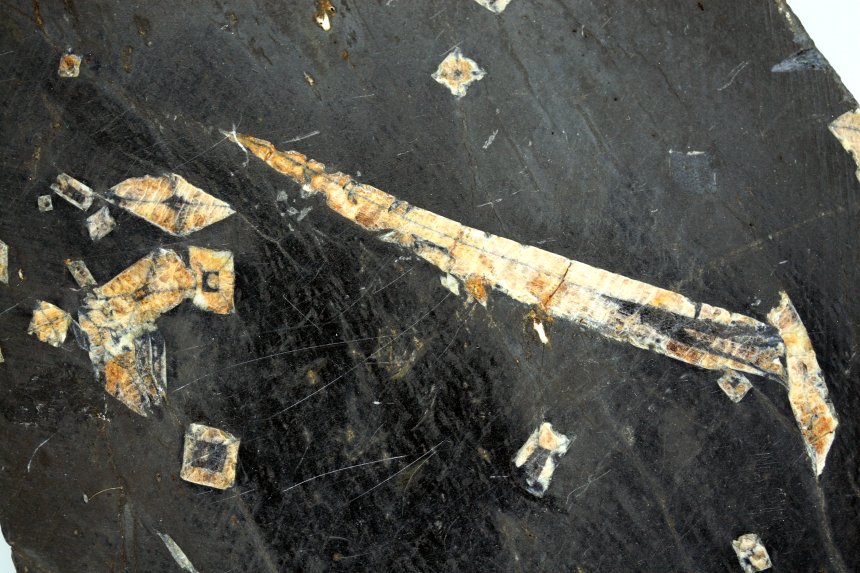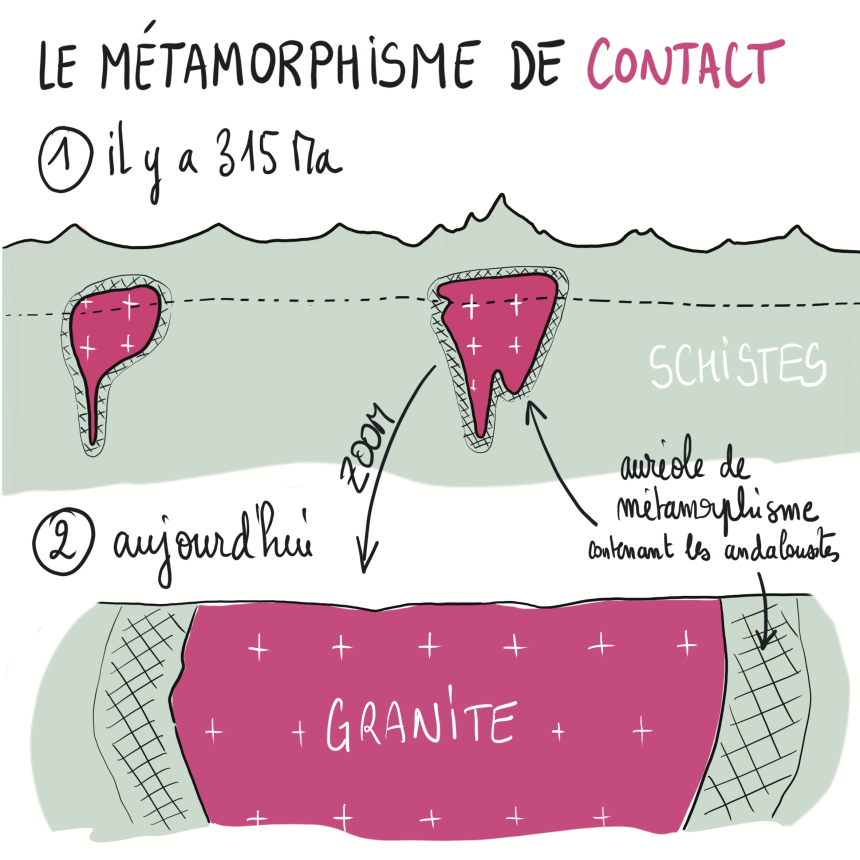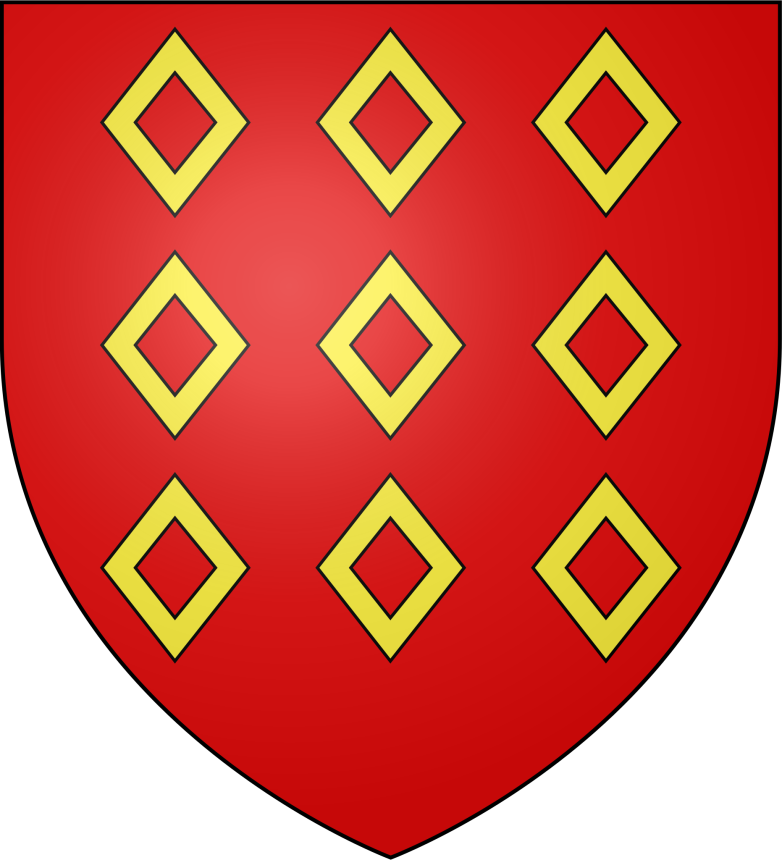Stone : andalousite-bearing schist
Type : metamorphic rock derived from a sedimentary rock
Age : between 450 and 470 million years / Metamorphism event : 315 million years
Quarry : Guerphales, Glomel (Côtes d’Armor)
World’s Largest Alumino-Silicate Deposit
This schist contains white, diamond-shaped rods of andalusite. This alumino-silicate makes up between 15 and 25% of the rock’s total volume. The Glomel deposit has been in operation since 1972. Each year, the quarry extracts 70,000 tons of andalusite. Unique in Europe, it accounts for a quarter of global production and is the largest alumino-silicate deposit in the world. The valuable mineral is exported worldwide.
Contact Metamorphism
The andalusite crystals formed in the schist during a period of contact metamorphism. This transformation occurs when very hot magma intrudes into a surrounding rock that is rich in clay minerals (in this case, schists). This metamorphism took place around 315 million years ago. The magma responsible for this transformation is now known as the Rostrenen granite (Côtes d’Armor).
Foundation of a Good Refractory Material
Andalusite is of industrial interest: “This mineral is a valuable raw material for the manufacture of refractory products and foundry molds” (Imerys). When heated to 1200°C, andalusite transforms into mullite—a mineral that is rare in nature but possesses exceptional thermo-mechanical properties. Mullite is highly resistant to high temperatures, making it an excellent refractory material.
Marked with a Cross
The andalusite extracted in Guerphalès is of the chiastolite variety, from the Greek kiastos, meaning “marked with a cross.” This cross is visible in cross-section of the rods and is caused by dark inclusions of carbon or clay. The coat of arms “Gules with nine gold lozenges” of the House of Rohan, a historic French noble family from the region, refers to the lozenge-shaped cross-sections of andalusite crystals. Macle is the old name once given to chiastolite.



